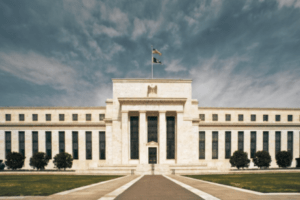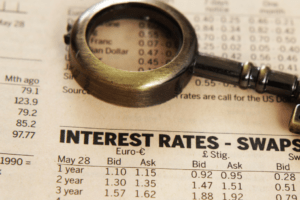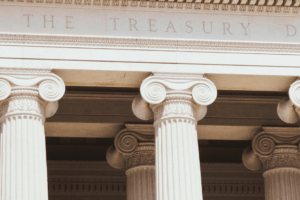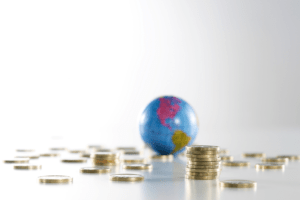Stocks were plummeting. Banks collapsed. By mid-October, the New York Stock Exchange had lost half its value from the previous year. The few remaining healthy companies bought out those that failed, and even the most fervent antitrust crusaders fell by the wayside. The economy was already in recession, with industrial production reduced by almost one-third. And the Federal Reserve did nothing.
To be fair, that’s because it didn’t exist. It was the Panic of 1907 that got U.S. policy makers to think seriously about having a central bank – something the country hadn’t had since 1836, a lifetime earlier.
Maybe America didn’t need a central bank in the mid-1800s. It was an agricultural power, not yet a commercial one. Let England and France have governors over their money supplies. Stateside, prices, employment and interest rates would rise and fall – but with the regularity of the planting and harvest seasons, not with the unpredictability of events an ocean away.
Today, agriculture accounts for only 5% of American gross domestic product, and virtually every nation on earth has a monetary authority – from oil-rich Saudi Arabia to agricultural Brazil, from capitalist Singapore to communist China. To exist in the global economy now, it seems virtually essential to have a central bank.
Which raises the question: How good a job has the Fed done at preventing a recession in that role since its 1913 founding?
How fed funds work
The Fed has a dual mandate of maintaining low unemployment and low inflation. This balance isn’t always possible. When unemployment gets too low, wages rise. With more money being pumped into the economy, inflation can take root. Anything you do to curb inflation – like raising interest rates – tends to slow economic growth and create unemployment.

The Fed can’t just rub a lamp and have a genie change interest rates. These are entirely market-driven. What it can do is sell its U.S. Treasury securities – of which it now holds about $9 trillion’s worth – which makes the bonds cheaper because it leads to greater supply. If a $1,000 bond was issued at 2%, it only yields 2% if its market value stays at $1,000. That, of course, never happens. When the Fed floods the market with these securities, that $1,000 bond will fall in price to $999.98 or $998.95 or lower. If you buy it at a lower rate, your yield will be somewhere above that nominal 2%. By selling bonds on the open market, the Fed makes it more expensive for money-center banks to borrow from each other short-term, so they raise the rate they charge one another – the so-called fed funds rate – and that cascades down into increases in the prime rate they charge their most stable borrowers, the mortgage rate they charge homeowners and eventually the rate on all other borrowing, whether it be through credit cards or installment loans.
This doesn’t generally lead to inflation. True, higher interest rates are another cost passed on to consumers – just like higher gasoline prices, which we all know is inflationary. But there’s something different about interest rates. They slow down business formation and growth. Companies that will pass along higher transport costs as gas prices increase will completely scuttle plans for a new factory or expansion into a new market until interest rates stabilize. So fewer people get hired, a bunch of people get laid off, and then there’s less money entering the economy, not more. Because there are fewer dollars, each dollar holds its value a little better, so inflation is quashed.

What could go wrong?
It’s a delicate act and, if you want an account of every time the Fed got it wrong, a conservative think tank called The Hoover Institution is happy to oblige. Let’s focus, though, on the central bank’s two most glaring errors when it makes attempts at preventing a recession. We’ll start with its ineptitude in preventing or mitigating the Great Depression of the 1930s. In fact, its actions – and its failures to act – made things worse.
The Fed had been raising interest rates for more than a year prior to the 1929 stock market crash. The bank saw that these securities were overvalued and tried to use higher interest rates to tamp down rabid speculation, but that is not what happened. Wall Street bucket shops kept pandering to unsophisticated customers and in the meantime, genuine, productive economic activity slowed.
As the Depression took root, the now gun-shy Fed sat on its hands and did little. One of the Federal Reserve’s tools it had the authorization to use – though it is only to be used in emergencies – is to act as the lender of last resort. By not using this extraordinary power over federal tools, the Fed permitted banking panics that wiped out the savings of many families. Between 1930 and 1933, the total money supply, one of the things to Fed is tasked to manage, dropped by almost 30%. This led to deflation which, under certain circumstances, can be every bit as devastating as inflation.
Now we move on to the Great Inflation of 1965 to 1982. At the start of that period, President Lyndon Johnson was indulging a couple of very expensive habits: the war in Vietnam and his Great Society program at home. And he refused to raise taxes, opting instead to raising funds through sale of government securities.

Success in the numbers
Up until then, the bond market had been a sleepy little corner of the financial services industry. The Fed had a policy of holding interest rates steady and, when the U.S. Treasury issued bonds only every couple of weeks, things worked just fine. Then, once the Treasury began cranking out bonds every bit as fast as the war was escalating, the Fed’s even-keeled approach no longer worked.
The Fed has had its share of successes, but that’s not when it makes headlines. Let’s not forget that, during World War 2, as the U.S. Treasury needed every dollar possible to fight the Axis powers, the Fed was able to keep interest rates low and still continue selling bonds.
And let’s not forget the period from 1983 to 2007 when the U.S. economy grew robustly and steadily, due in part to sound Fed policy. One is apt to forget that, during this period, there was a Latin American debt crisis, the failures of several big banks and the entire savings-and-loan industry, the 1987 stock market crash and the Asian financial crisis of 1997 – followed by the 9/11 attacks and the subsequent generation of ongoing warfare. All the while, American industry kept chugging along. Finally, along came the 2008 financial crisis. It’s unclear what the Fed could have done to prevent it – keep people in the financial and real estate sectors from being greedy? – but the Fed and its partners at the Treasury, under both the Bush and Obama administrations, found a way out of it. It wasn’t pretty and there is no doubt that the recovery could have gained strength sooner, but the economy kept growing until March 2020.

Is it working now?
It must be said that no crisis is purely the creation of economists. The 1970s’ problems involved not just an oil embargo, but also the expense of a war as well as the inevitable shifting of resources as it ended. The Dust Bowl drought of the 1930s didn’t cause the Depression, but it make things a lot worse. And even the Panic of 1907 had roots in the San Francisco earthquake of the prior year.
In the current cycle, the Fed has had to work around the Covid-19 pandemic, the subsequent lockdown, the waves of variants that kept the economy from roaring back immediately, the resultant supply chain disruptions and, most recently, the Russian invasion of Ukraine.
Even so, the Fed is currently deciding how high interest rates can go and how fast. While this may suggest that inflation might not have much more running room left, it also means that the economy could sink back into recession.



